calsfoundation@cals.org
Toltec Mounds Site
The 100-acre Toltec Mounds site in Lonoke County between Scott (Pulaski and Lonoke Counties) and Keo (Lonoke County) is one of the largest archaeological sites in Arkansas and in the lower Mississippi River Valley. It was designated a National Historic Landmark by the Heritage Conservation and Recreation Service of the United States Department of the Interior in 1978 in recognition of its significance in the history of America. It opened as a state park in 1980.
Native Americans occupied the Toltec Mounds site and built the mounds between the years 650 and 1050 AD. Archaeologists use the name Plum Bayou Culture to refer to their way of life. This culture cannot be identified with any of the tribes living in the area in the 1700s. The site was situated on the bank of an oxbow lake that was part of a channel abandoned by the Arkansas River. Three sides of the site were bounded by a ditch and ten-foot high earthen embankment. The site was the primary religious center for the people who lived in the countryside. Only a few of the religious leaders lived at the site, but it was used for ceremonies. Plum Bayou people were farmers who grew domesticated plants, mainly maygrass, little barley, amaranth, and cenopodium. They hunted white-tailed deer, turkey, and other animals, as well as fished and gathered nuts and wild plants.
The mounds were built gradually during the 300-year period the site was in use. Eighteen mounds were arranged around two rectangular open spaces that were used for ceremonies. Today, one mound is forty-nine feet high, another is thirty-nine feet high, while a third is thirteen and one-half feet high; the original heights are unknown. All others are less than four feet high. Only one mound has been identified as a burial mound. Some were used as platforms for ceremonies, while others had residences of religious leaders on them. Excavations in five mounds have uncovered evidence that they were originally low flat-topped platforms constructed with soil. Several mounds were positioned to line up with the sun on the horizon at sunrise and sunset on the equinoxes and solstices. The position of the sun on the solstices established times that were important in the annual cycle of activities, both for farming and for rituals. A standardized unit of measurement, 155.8 feet, was also important in the placement of mounds, so that the site layout was planned.
There are no clues as to why the site was abandoned about 1050 or where the Plum Bayou people went. Later Native Americans of the Mississippian Period occasionally used the site for ceremonies or rituals and placed burials in many of the mounds, so that it continued to be a sacred place.
Mary Eliza Knapp of Little Rock (Pulaski County), the landowner, reported the site to Joseph Henry, Secretary of the Smithsonian Institution, in 1876. (French hunters and settlers in the Arkansas River Valley had known about the mounds and embankment in the late 1700s and early 1800s.) William P. Officer, Mary Eliza Knapp’s first husband, purchased the land in 1848. The Smithsonian published a brief note about the site in 1878. Archaeologists from the Peabody Museum of Harvard University and the Bureau of Ethnology explored the site in 1879 and 1882. The three reports provided important descriptions of the site. In subsequent years, other archaeologists visited the site, but when none of them discovered whole pottery vessels or other distinctive artifacts, interest in the site languished. The mounds were gradually reduced in height by plowing after farming began in the 1850s. Several mounds were deliberately leveled in the 1960s. Most of them were no longer visible, although remnants survived.
“Toltec” is a misnomer for the builders of the mounds, first called the Knapp Mound Group. In the 1800s, people thought that Indians of the eastern United States were not culturally advanced enough to build monumental mounds and earthworks. The Toltecs and Aztecs in Mexico were associated with civilization and the building of monumental earthworks. A popular theory was that these tribes once lived in North America north of Mexico and built mounds. In 1883, research by the Bureau of Ethnology of the Smithsonian Institution provided the evidence that mounds were built by the ancestors of local Indians and not by Toltecs and Aztecs from Mexico. However, in 1888, when a railroad was built near the Toltec Mounds, landowners Gilbert Knapp, Mary Eliza Knapp, and Eustis Officer (her son) named the railway station Toltec. The name continues to be used by the people living in the neighborhood. The Division of Arkansas State Parks decided to name the state park it established Toltec Mounds Archeological State Park because the site was commonly known by that name; the park was later renamed Plum Bayou Mounds Archeological State Park.
Archaeologists with the University of Arkansas Museum in Fayetteville (Washington County) conducted a brief excavation in 1966. The samples of pottery and stone tools recovered in the excavation allowed archaeologists to estimate the time the mounds were used. The site was placed on the National Register of Historic Places on January 12, 1973; the Arkansas Department of Parks and Tourism purchased the land in 1975 and opened the state park in 1980.
The Arkansas Archeological Survey of the University of Arkansas began a long-range research program in 1976. This program continues under a cooperative agreement between the Division of Parks and the Arkansas Archeological Survey. The research program has collected information about the Plum Bayou Culture and the way of life of the people living here over 1,000 years ago.
For additional information:
Anderson, David G. “The Toltec Mounds Site in Southeastern Prehistory: Influences from Early Collections.” Arkansas Archeologist 47 (2006–2007): 9–30.
Jeter, Marvin D. Edward Palmer’s Arkansaw Mounds. Fayetteville: University of Arkansas Press, 1990.
Rolingson, Martha Ann. “Plum Bayou Culture of the Arkansas-White River Basin.” In The Woodland Southeast, edited by David G. Anderson and Robert C. Mainfort Jr. Tuscaloosa: University of Alabama Press, 2002.
———. “Public Archeology: Research and Development of the Toltec Mounds Site.” In Arkansas Archeology in Review, edited by N. L. Turbowitz and M. D. Jeter. Research Series No. 15. Fayetteville: Arkansas Archeological Survey, 1982.
———. “The Toltec (Knapp) Mounds Group in the Nineteenth Century.” In Arkansas Archeology, Essays in Honor of Dan and Phyllis Morse, edited by Robert C. Mainfort Jr. and Marvin D. Jeter. Fayetteville: University of Arkansas Press, 1999
———. Toltec Mounds: Archeology of the Mound-and-Plaza Complex. Research Series No. 65. Fayetteville: Arkansas Archeological Survey, 2012.
———. Toltec Mounds and Plum Bayou Culture: Mound D Excavations. Research Series No. 54. Fayetteville: Arkansas Archeological Survey, 1998.
Sherrod, P. Clay, and Martha Ann Rolingson. Surveyors of the Ancient Mississippi Valley. Research Series No. 28. Fayetteville: Arkansas Archeological Survey, 1987.
“Toltec Indian Mounds.” National Register of Historic Places nomination form. On file at Arkansas Historic Preservation Program, Little Rock, Arkansas.
Martha Ann Rolingson
Arkansas Archeological Survey
 Indian Mounds
Indian Mounds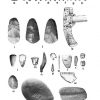 Pre-European Exploration, Prehistory through 1540
Pre-European Exploration, Prehistory through 1540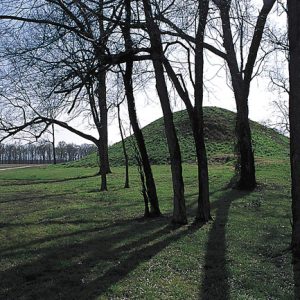 Plum Bayou Mounds Archeological State Park
Plum Bayou Mounds Archeological State Park 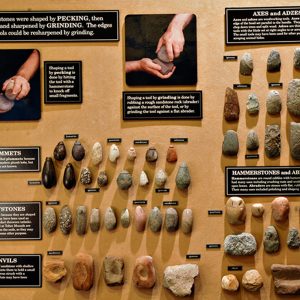 Plum Bayou Artifacts
Plum Bayou Artifacts 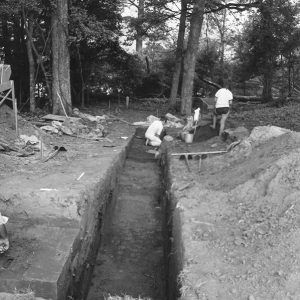 Plum Bayou Mounds Excavation Trench
Plum Bayou Mounds Excavation Trench  Plum Bayou Mounds Park Personnel
Plum Bayou Mounds Park Personnel 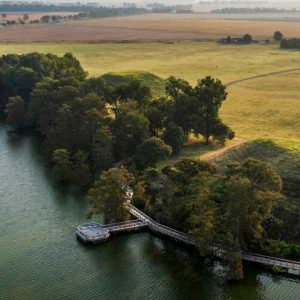 Plum Bayou Mounds View
Plum Bayou Mounds View 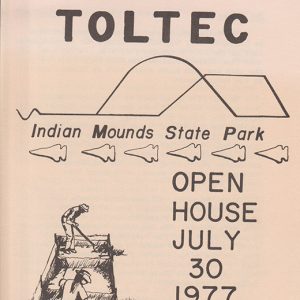 Park Open House Brochure
Park Open House Brochure 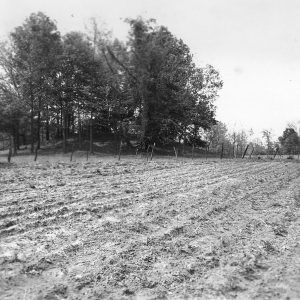 Toltec Mounds Site
Toltec Mounds Site 



Comments
No comments on this entry yet.